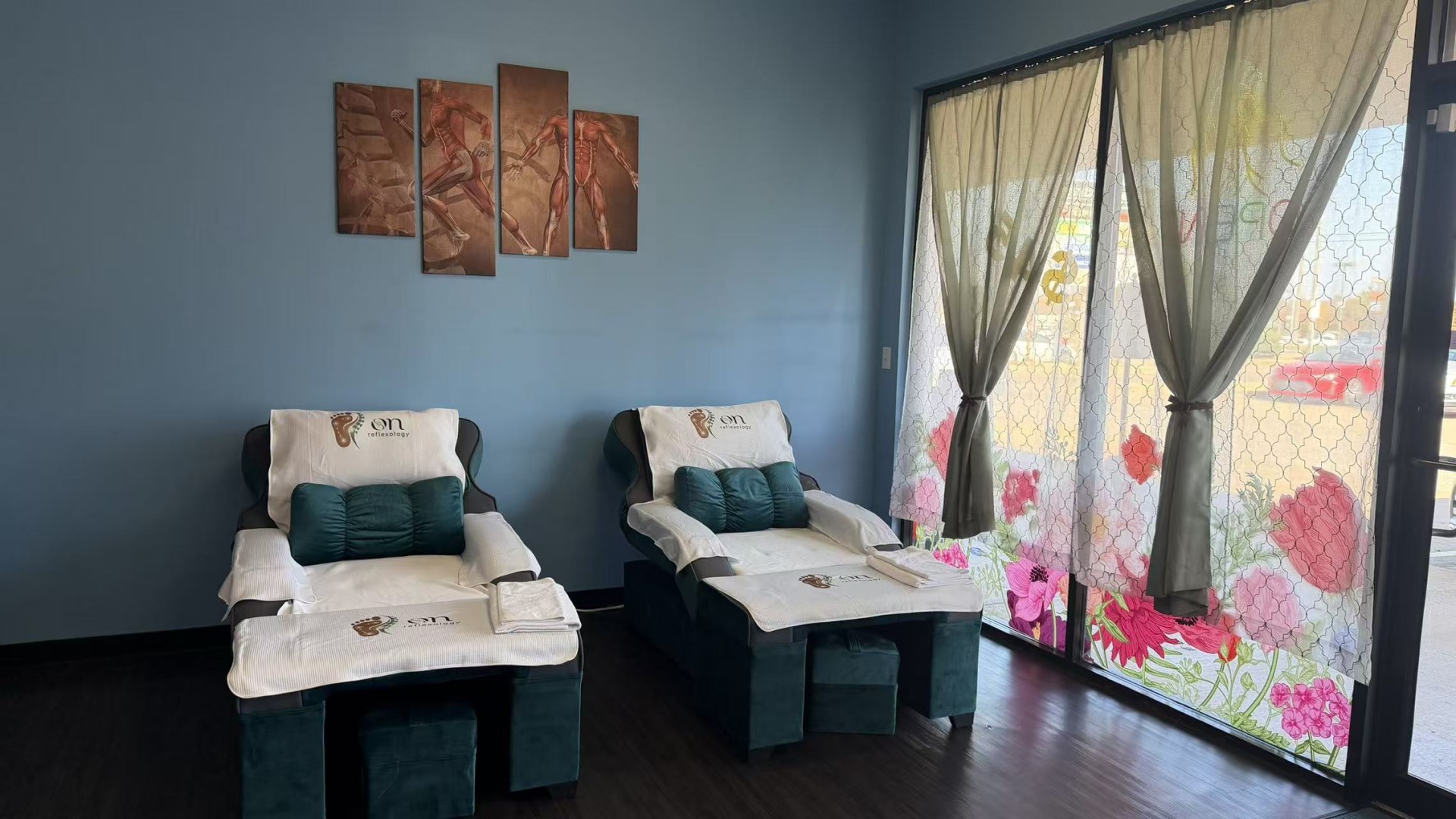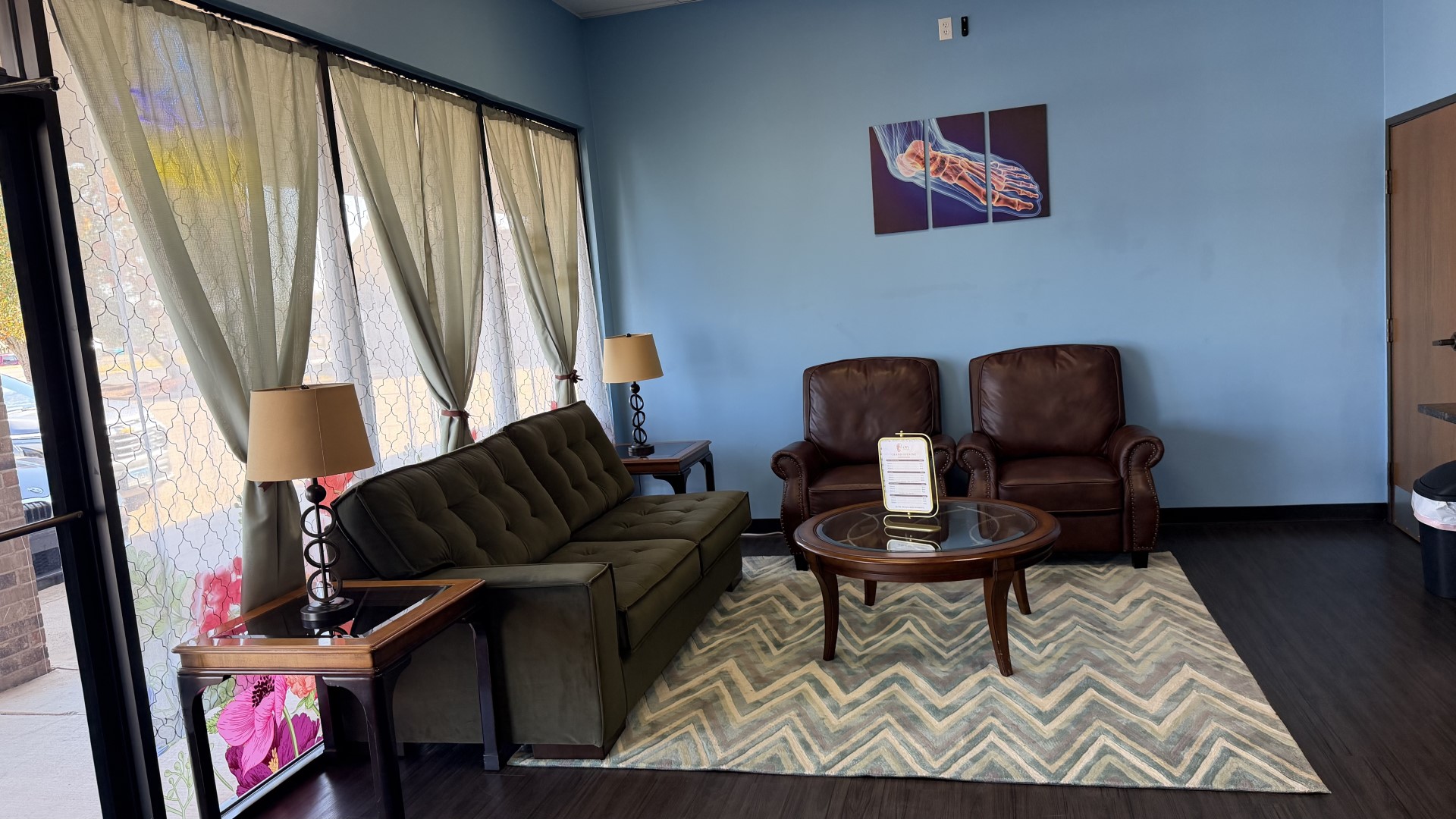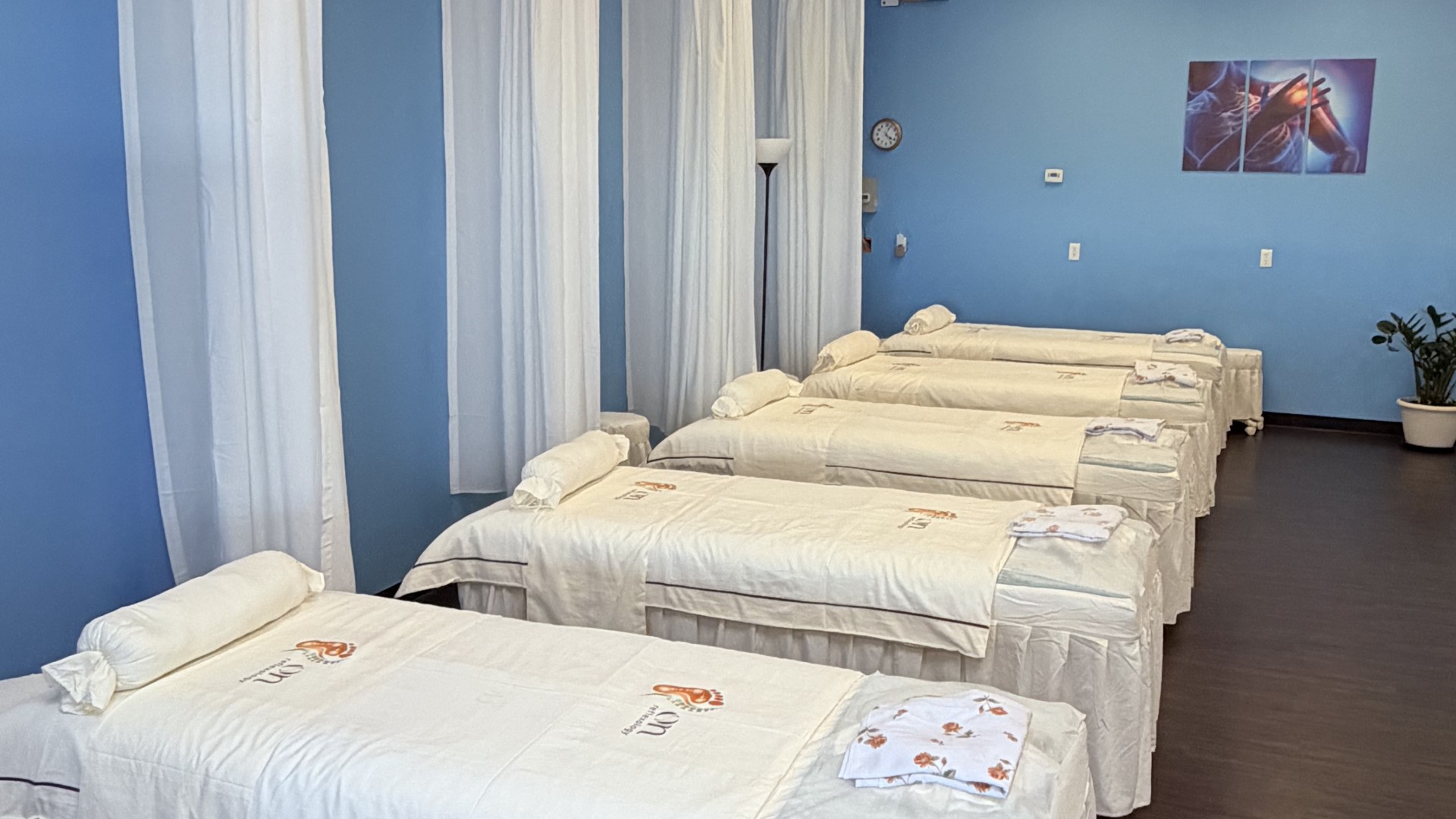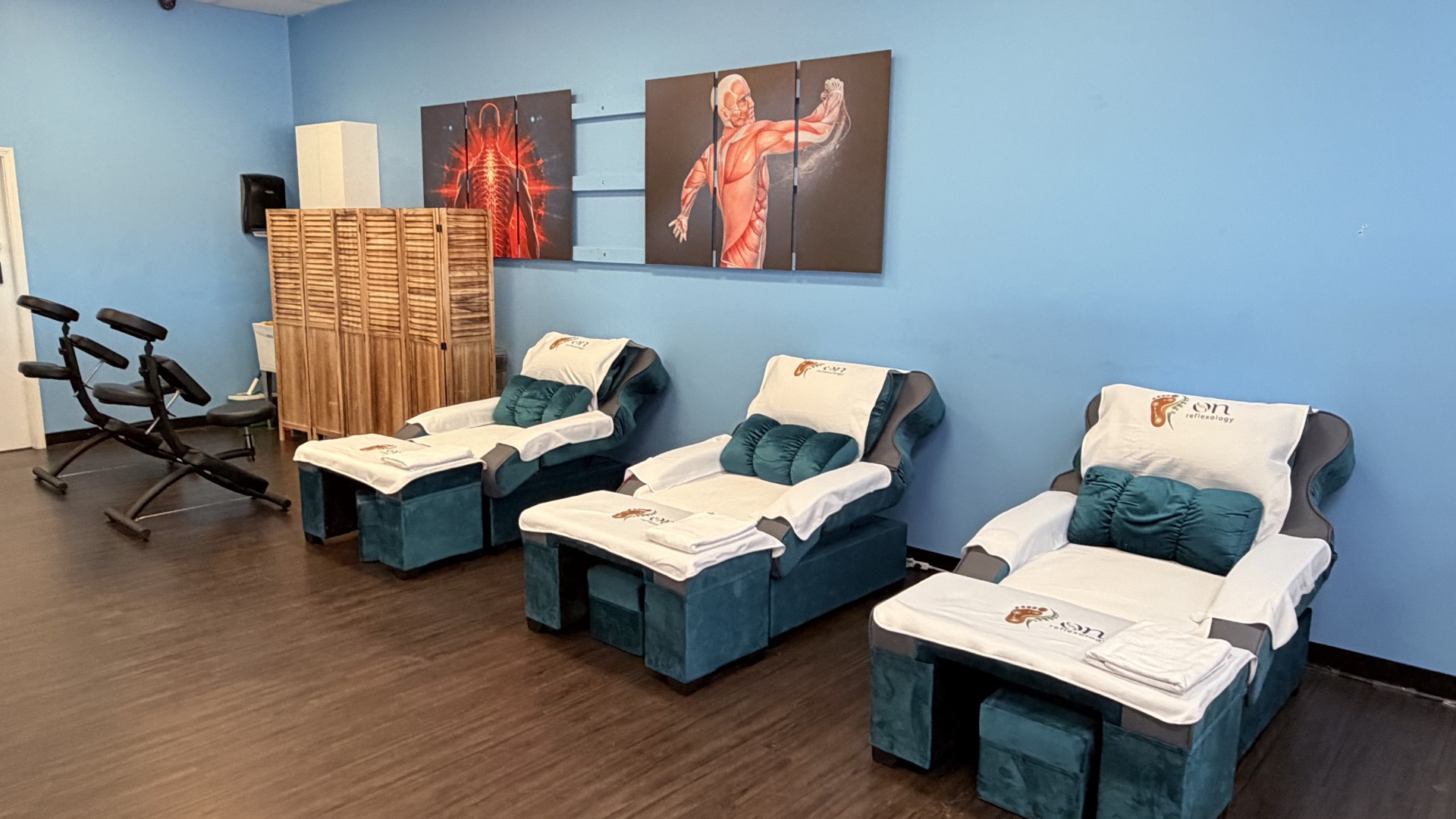The History of Reflexology
Reflexology is a form of massage that has been around for centuries. Its origins can be traced back to ancient China and Egypt, where it was used as a form of healing. Reflexology is based on the theory that there are reflex points on the feet and hands that correspond to all of the organs and systems in the body. When these reflex points are stimulated, it can help to improve the function of the corresponding organ or system. In this article, we will take a look at the history of reflexology and how it has evolved over time!



.jpg)
.jpg)
.jpg)
.jpg)
.jpg)
.jpg)
.jpg)
.jpg)
.jpg)
.jpg)
.jpg)
.jpg)
.jpg)
.jpg)
.jpg)
Our Reflexology Mission
Through the healing power of reflexology, we aim to:
- Relieve tension and stress
- Improve blood circulation
- Clear energy blockages
- Support your body’s natural balance and homeostasis
We are committed to offering you an exceptional experience — at a great value, always.
We’ve removed the stress of memberships so you can simply relax — no strings attached.
We believe that once you experience the soothing, rejuvenating power of reflexology, you’ll want to come back — not because you have to, but because you love it.
Your session should be peaceful, calming, and deeply relaxing.
That’s our promise to you.
How it may help...
- - Relieve stress
- - Help you feel relaxed
- - Reduce muscular tension, eye strain and headaches
- - Stimulate circulation and lymphaticdrainage
- - Lower high blood pressure
- - Increase your energy levels
- - lmprove your sleep
- - Reduce hypertension
- - Enhance focus and concentration
General Benefits of Reflexology
- - Induce deep relaxation and reduce stress
- - Cleanse the body of impurities
- - Revitalise energy
- - Improve the circulation of the blood & lymph fluids
- - Promote efficient functioning of the bodily systems
- - Boost Immunity
- - Improve your sleep
- - Relieve aches & pains
Ancient Reflexology
Reflexology can be traced back to ancient civilizations in Egypt, China, and India. The practice was used as a form of therapy and healing. In China, reflexology was known as "zone therapy" and was practiced for over 3000 years! The therapist would apply pressure to specific areas on the feet, hands, or ears that corresponded with different organs in the body.
This would help to clear any blockages and restore balance. In India, the practice of reflexology was known as "Ayurveda" which means "the science of life". Ayurvedic texts dating back to 3000 BC mention the use of foot massage for various conditions such as headaches, indigestion, and even paralysis.
The basic concept behind reflexology
According to reflexology, all of the body's systems and organs are mirrored or reflected in smaller peripheral regions, such as the feet, hands, ears, and face. These issues may be viewed in light of the feet by following the link to our interactive reflexology map.
In the early 20th century, studies into this idea produced the first reflexology foot map in the West. Since then, other body regions have been mapped, allowing reflexology to be used on the hands, ears, and face. The reflexologist focuses on the reflected areas of the body, attempting to return them to balance and allowing the body to function at its peak possible. Reflexology, on the other hand, is highly personalized. The reflexologist assists you in utilizing your body's own potential for wellness.
The Development of Modern Reflexology
Reflexology, as we know it today, is a relatively new practice. It was developed in the early 1900s by an American doctor named William Fitzgerald. Dr. Fitzgerald believed that there were specific pressure points on the hands and feet that were connected to different organs and systems in the body. He designed a system of treatment based on these pressure points, which he called "zone therapy."
Zones
He divided the body into 10 longitudinal zones, starting with the head and progressing down to the toes and fingers, and discovered that applying pressure to certain spots in a zone corresponded to pain relief throughout other regions of the body in that zone.
He applied pressure to the toes and fingers of his patients and realized that this produced considerable analgesia and relieved headaches, earaches, tummy aches, etc.
During the 1930s, another American physician named Eunice Ingham further developed Fitzgerald's zone therapy. Ingham is recognized as the founder of modern reflexology. She was a physical therapist who developed this natural healing modality in the 1930s.
Ingham's work was largely unknown outside of her native Ohio until she published her best-selling book, Stories the Feet Can Tell, in 1938. This book brought reflexology to public attention for the first time and helped popularize it as a natural healing modality.
Notable Contributions
Eunice Ingham died in 1974, at the age of 85. The following are some of her notable accomplishments:
1. The discovery that the reflexes on the feet are a mirror image of all organs, glands, and body sections - the charted map of the reflexes according to the anatomical model.
2. Rather than a numbing effect, as shown by Dr. Fitzgerald, the alternating pressure has a stimulant impact on the body.
3. Reflexologists are working with other therapists, such as Chiropodists, Osteopaths, Naturopaths, Massage Therapists, and Physiotherapists to bring reflexology to the public and non-medical sector.
These are the people that paved the way for Reflexology as we know it today by pioneering, developing, and establishing a solid foundation. Today, reflexologists can be found all over the world, providing relief and relaxation to people of all ages. Thanks to its many benefits, reflexology is here to stay.
Reflexology Organizations
The Association of Reflexologists (AoR) was founded in the United Kingdom in 1984. In 1991, the International Council of Reflexologists (ICR) was established in Toronto, Canada. The Reflexology in European Network (RiEN) was formed in 1994. Since then, several more reflexology organizations have been formed with the goal to spread awareness about massage treatment.
The history of reflexology is a fascinating tale that involves ancient Egyptian tombs, medical doctors, and an attempt on the life of an American president. Reflexology is a branch of conventional medicine that arose from reflexology. Whatever the case may be, reflexology was here before us and will continue to exist long into the future.





